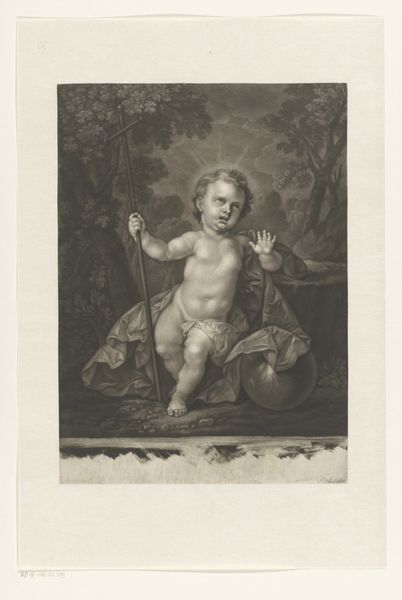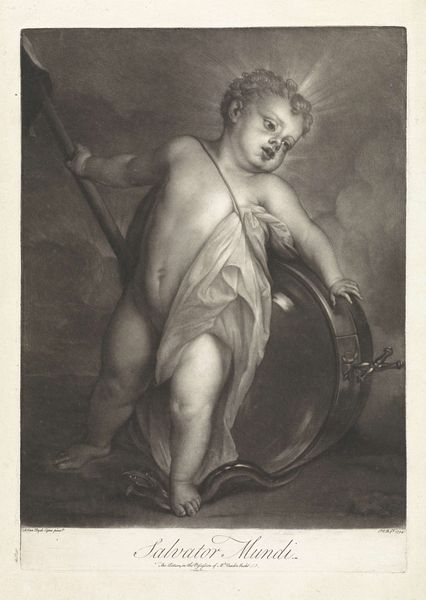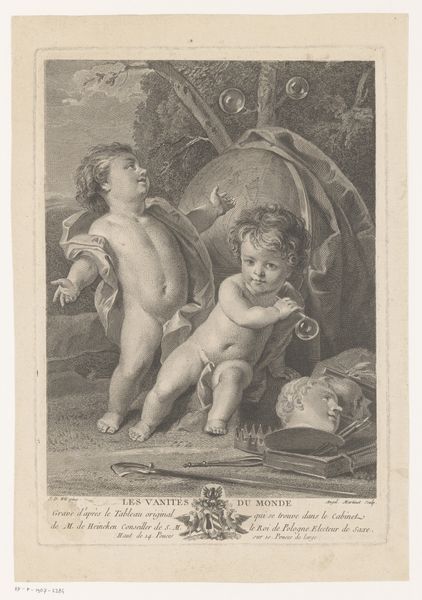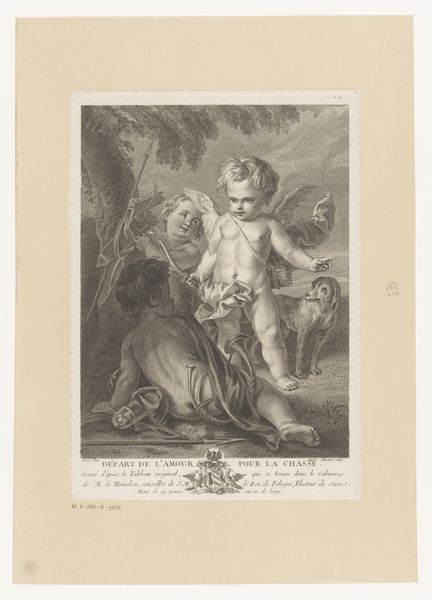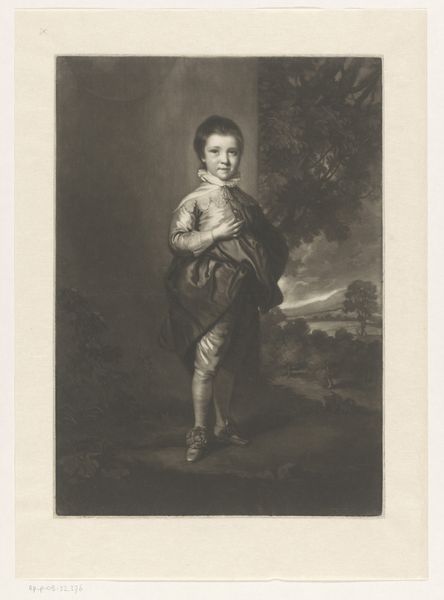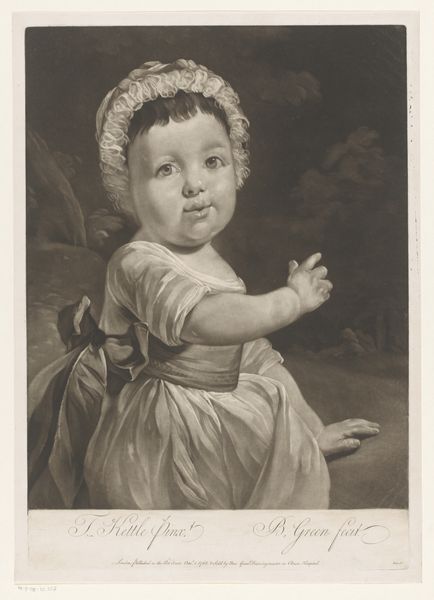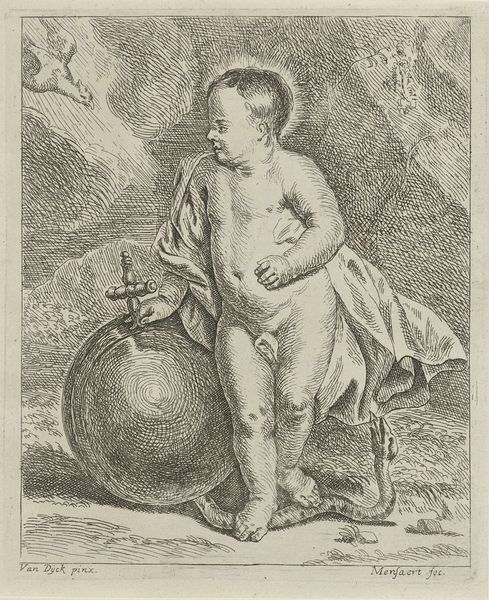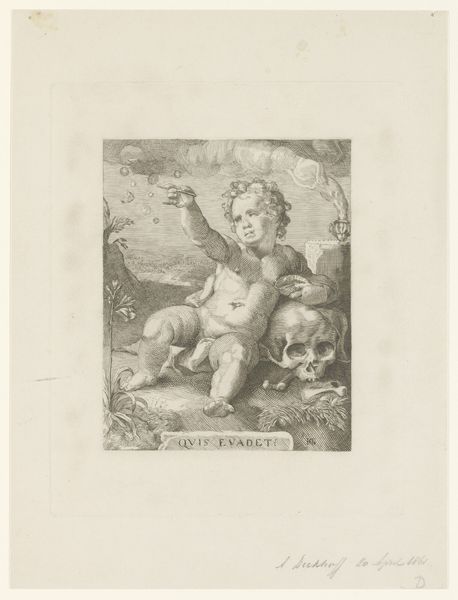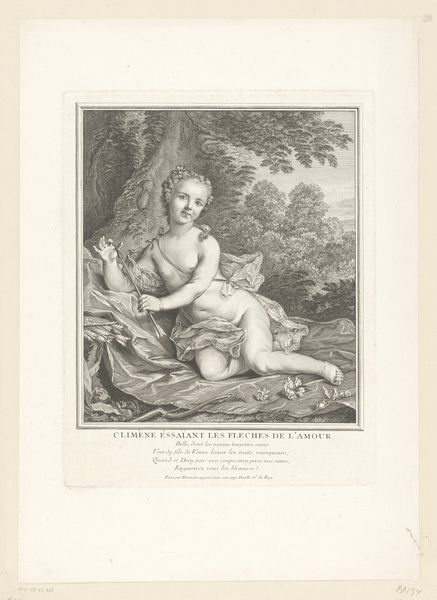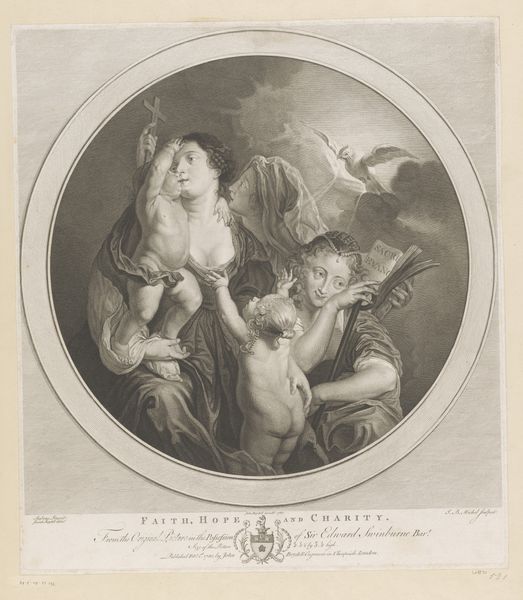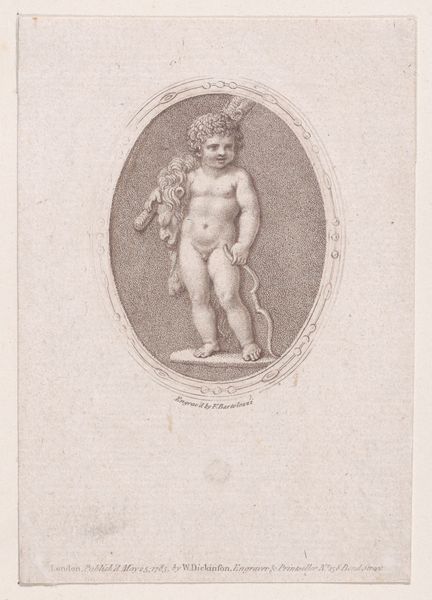
print, engraving
#
portrait
#
baroque
# print
#
engraving
Dimensions: height 355 mm, width 254 mm
Copyright: Rijks Museum: Open Domain
Curator: Just look at that little guy, all chubby knees and serious business. Editor: Indeed! Here we have John (II) Faber's engraving of Salvator Mundi, dating back to sometime between 1694 and 1756. The medium is interesting to me because we are meant to perceive softness and form in the Christ Child via print, which usually renders harsher lines. Curator: And what symbols leap out to you right away? The orb, clearly under his dominion; the cross, naturally… that slightly petulant expression? Editor: Yes! It's a classic iconography. The orb symbolizes earthly power and, yes, dominion; his halo signifies divine grace; the cross foretells his destiny; and the gesture of his right hand is quite deliberate; the hand lifted in a benediction and blessing towards humanity, a classic gesture from this period.. And yet, the artist makes the baby appear somewhat detached, maybe even mildly displeased by this very heavy calling upon his small shoulders. Curator: Speaking of material conditions, consider Faber himself, laboring over the plate. How many prints like this would he have needed to sell to make a living? Were these engravings destined for private devotion, or were they commodities circulating through a larger visual culture? The small type at the bottom indicates he was “Sold by I. Faber, at the Golden Head fourth side of Bloomsbury Square.” We might even trace the flows of materials, from the ink and paper to the markets it was sold in. It connects what is divine to the human realm. Editor: Excellent points, as always! These kinds of engravings circulated widely, creating, recreating and reinforcing an array of religious imagery across the populace. I find it intriguing that the material processes contributed, however modestly, to the broader project of disseminating and standardizing not only a vision of the Christ child, but also reinforcing the cultural norms it signified. Curator: Absolutely. Considering the role this image, however humble the production value might be, has played in shaping the narratives and values passed down through generations—well, that's where the real significance of "Salvator Mundi" lies for me. The human impact as well as its physical qualities are intertwined. Editor: It is, perhaps, a bit unsettling to think that it began in the daily routines and choices of individual engravers and print-sellers. Sobering, actually.
Comments
No comments
Be the first to comment and join the conversation on the ultimate creative platform.
